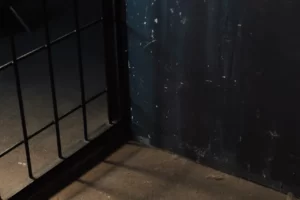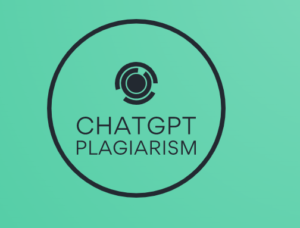It is pretty hard to get things right at first. You definitely need more effort and practice to learn things and execute them in the right manner. Take driving as an instance; you cannot take the car on the main road on the first day of practice. But you need constant practice, assistance, and correction to acquire better results. Same is the case with the writing.
If you believe that you don’t hold good writing skills and look for paraphrasing the content. While paraphrasing the text, most of the students remain unable to do this properly and get plagiarism in their essays. Remember, if you do paraphrasing properly, it doesn’t mean that you don’t need to cite the data; it still isn’t considered your own ideas.
So, the question is; is paraphrasing plagiarism? How can you avoid plagiarism?
In this article, you will get to learn about the difference between plagiarism vs. paraphrasing, some of its examples, and a few tips to avoid it.
Plagiarism vs. Paraphrasing
Check out the difference between paraphrasing and plagiarism:
What is Plagiarism?
Plagiarism is an act of stealing or borrowing someone else’s concept or ideas with or without their consent, and representing them as your work. Whether you follow this practice in academic or professional life, digital or print form, copying of someone else’s work is considered plagiarism. Plagiarism occurs if you:
- Use words, ideas, or concepts of someone else without mentioning him/her.
- Rewrite the content of someone without giving citations.
- Present someone’s work as your own property.
- Use someone’s video, photo, or song without their consent.
- Do not quote the saying you’re mentioning.
What is Paraphrasing?
The method of using your own words to express someone else’s opinions and research is known as paraphrasing. In other words, it is the repetition of a piece of writing using different language, sentence structure, and vocabulary, but maintaining the same content.
When writing an essay or a research paper, paraphrasing is the most common approach. It helps students in delivering crucial ideas in a more succinct manner while still expressing the original concept.
Yet, unless you want your writing to seem like someone else’s, you’ll need to learn about how to do successful paraphrasing. However, if you do improper paraphrasing, plagiarism can occur, which is an unacceptable and considered unlawful practice.
Paraphrasing Plagiarism Examples
In the below paraphrasing plagiarism example, you would clearly identify the difference between a poor and good paraphrasing. However, despite the citations, if paraphrasing is done poorly, it still could get plagiarism.
| Original Text | Perceived control moderated the relationship between worry and examination performance. At lower levels of worry, performance of persons higher in perceived control was better than for those lower in perceived control. However, the performance advantage offered by perceived control diminished worry increased. This suggests that test anxiety is multi-clausal and some persons may become test anxious for reasons other than their self-beliefs. |
| Poor Paraphrasing | Performance of persons higher in perceived control was better than for those lower in perceived control at lower levels of worry. There was less performance advantage offered by perceived control when worry increased. This suggests that some persons may become test anxious for reasons other than their self-beliefs. (Putwain & Aveyard, 2018). |
| Proper Paraphrasing | Putwain and Aveyard (2018) found that student exam scores were higher for students that had confidence in their ability to avoid failure when they worried less. When students were more worried, confidence in their abilities did not help (Putwain & Aveyard, 2018). Putwain and Aveyard postulated that some students had additional reasons for test anxiety that were not based on the student’s beliefs. |

GET ACADEMIC WRITING HELP
Your assignment won’t be delivered on time: you’ll get it beforehand. Review your work immediately and ask for free revisions right away. Get extensive help in:
 Online Class
Online Class  Exam
Exam  Homework
Homework
 Assignment
Assignment  Essay Writing
Essay Writing  Dissertations
Dissertations
Is Paraphrasing Plagiarism?
When you paraphrase someone’s concept without crediting him and adding the reference page or magazine in the text, it is considered plagiarism. While obtaining and using materials from libraries, journals, and online publications, students frequently make this error, regardless of unintentionally or purposefully.
Plagiarism is a serious violation that must be avoided at any cost. It can lead to your work being rejected, low grades, and possibly expulsion of a student. Moreover, it might result in your degree being canceled, preventing you from obtaining work, or enrolling in another school.
Furthermore, plagiarizing someone else’s work deprives the original author of credit or profit, which may result in legal action against you. Avoiding plagiarism when paraphrasing others’ work is the greatest approach to prevent such harsh consequences.
Three Tips to Avoid Plagiarism while Paraphrasing
You definitely should not take a risk on your grades. So, in order to avoid plagiarism in your writing, you can follow the tips mentioned underneath:
Cite your Work
Make sure to cite your work while writing each piece of information you find when conducting research and taking notes for your work. One method students commit plagiarism is by forgetting where an idea came from and presenting it as their own by mistake.
By keeping your notes compiled and organizing the list of citations as you move further in your essay, you can easily avoid plagiarism. Keep note of all the sources you use, including websites, journal articles, and videos, books, and magazines.
Then you can quickly go back and double-check where you found a term, fact, or concept for your article and cite them immediately.
Add Quotation Marks
Another technique towards plagiarism-free essays is to quote the phrases from which you’ve borrowed information. Quoting allows the reader to see where your ideas came from while also preventing others from accusing you of plagiarizing their work.
If you’re copying some lines directly from another source without paraphrasing them, use quotation marks around it to present that it wasn’t your idea. Make sure to provide a reference to it in your bibliography.
Use Plagiarism Tools
In order to detect plagiarism, most colleges utilize plagiarism checkers. These plagiarism checkers examine your writing, compare it to a database of web pages and publications, and identify portions that appear to be identical to others.
However, check the plagiarism before submitting your work. It enables you to spot errors that might lead to unintentional plagiarism, such as:
- Citations that have been lost or inappropriate
- Quotation marks are missing.
- Paraphrased content that is too close to the original text
Once you’ve identified these errors, you will be able to promptly correct them to avoid plagiarism.
Conclusion
Whether you’re writing research papers, essays, or other academic projects, make sure your work is 100% unique and written in your own words. We hope that the above methods will assist you in determining when paraphrase plagiarism is occurring and how to prevent it in order to create a fresh, updated writing article.
Nonetheless, if you are struggling with the plagiarism in your essay, hire subject experts now. At Scholarly Help, you will receive 100% authentic and unique work within the due time at highly affordable rates.


